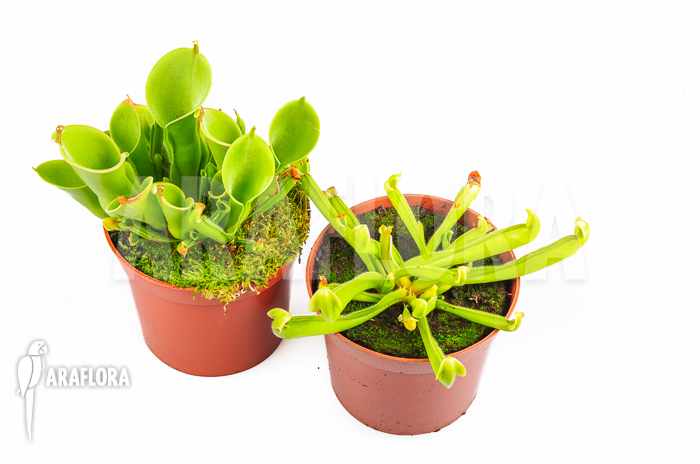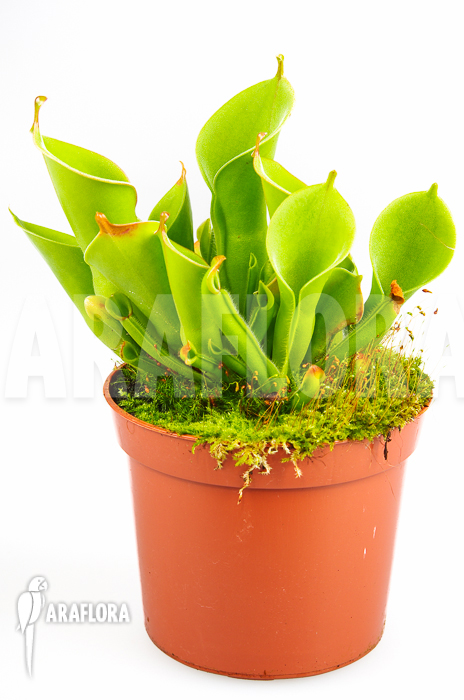Heliamphora 'Starter' set 2 species - CarniHeli105
Heliamphora 'Starter' set 2 species - CarniHeli105
This is a great set of two Heliamphora species, Heliamphora nutans, Heliamphora heterodoxa, Heliamphora minor x heterodoxa, or Heliamphora minor, depending on availability. These two Heliamphora plants (also known as sun pitcher plants) will be shipped in 6 cm pots, and if all goes well, you should have your first mature Heliamphora pitchers within a year.
This product is currently still in stock
Share this plant? Press on one of the following icons.
Heliamphora, also known as Sunpitcher plants, are carnivorous plants native to the remote Tepui mountains of Venezuela, Guyana, and Brazil. Species such as Heliamphora nutans, Heliamphora heterodoxa, and the hybrid Heliamphora minor x heterodoxa thrive in cool, moist, and misty environments at high altitudes. These plants were first described in the 19th century and have adapted to the isolated mountaintops where they grow, leading to a rich diversity of unique species within the genus. Heliamphora is carnivorous because they grow in nutrient-poor soils. They obtain their nutrients from insects that drown in their pitcher-shaped leaves. Bacteria and enzymes break down the prey, allowing the plant to absorb essential nutrients like nitrogen and phosphorus. The Araflora symbols below provide more information about these fascinating carnivorous plants.




Heliamphora, such as Heliamphora nutans and Heliamphora heterodoxa, require specific care to thrive: Temperature: 18-25°C during the day, cooler at night. Light: Bright, indirect light; avoid direct sunlight. Humidity: High, 50-80%; use a humidifier or terrarium. Water: Distilled or rainwater; ensure well-draining soil. Soil: Low-nutrient, slightly acidic, well-draining (e.g., sphagnum, perlite, sand). Feeding: Small insects like fruit flies; feed monthly. Winter Dormancy: Reduce water and feeding in winter. Hybrids like Heliamphora minor x heterodoxa are often more robust but have the same basic care requirements. Repotting is rarely necessary, only when the plant becomes too large or the soil is to dense.






 7 cm
7 cm
 6 cm
6 cm












